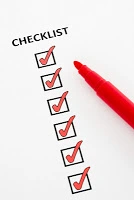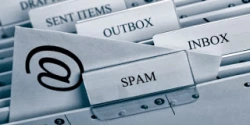By following the advice of influencers for digital marketing and social media marketing, I have been practicing a variety of Twitter activities to grow my Twitter following. Through my experiments, I increased my Twitter followers by 328% in 2 weeks.
Since my last post instead of blogging, I have been busy testing different Twitter activities to identify what works to increase my Twitter followers, and today, I am sharing share my findings with you.
Before dedicating the time to building a Twitter following, I honestly didn’t understand the value of Twitter. Now, after spending some time on Twitter, I am a Twitter believer, and I see the value of including Twitter in your social media marketing mix.
Twitter is a casual forum for buyers and sellers to connect. By following industry influencers, I gained access to news and resources that I hadn’t seen before. Also, I connected with fellow digital marketing managers and social media managers and discovered what they needed to help reach their goals.
With Twitter, You can Connect with Your Target Audience by
- Providing information they need to make purchasing decisions
- Giving them information to satisfy their needs
- Giving them tips to better use your products or services
- Starting two-way conversations
- Building relationships
Before diving into Twitter, I identified the following items
- My target audience
- My goal to increase my number of followers that meet my target audience criteria
- Find and Follow my market influencers – find experts using wefollow.com or twibes.com

- Popular Hashtags used by market influencers
- Additional Hashtags for my market to use in my tweets – Some of these Hashtags are my keywords. Test by using the URL https://twitter.com/hashtag/(yourkeyword)
12 Twitter Tips that Increased my Twitter Followers by 328%

- Follow relevant followers.
- Follow the Influencers – They include journalists, analysts, and bloggers for your market.
- Thank people who follow you.
- Retweet and Favorite Tweeted Content – Content you think might benefit your target audience.
- Tweet or Retweet Events – Inform your target marketing of upcoming webinars or events that are relevant.
- Especially, Retweet Relevant Content from Influencers
- When Retweeting, include a Quote when Appropriate – Quotes should add value, include a call to action, or link to similar content created by you or someone else.

- Hashtags – Tweets with hashtags are posted on twitter streams seen by people outside of your followers.
- When Retweeting, include a Quote when Appropriate – Quotes should add value, include a call to action, or link to similar content created by you or someone else.

- Include Hashtags in your Tweets and Retweets – When applicable include hashtags to increase the exposure of your Tweets and potential people to follow you.
- For Followers or People that Favorite or Retweet your Tweets – Always thank them, and if they don’t already follow you, encourage them to follow you.
- Ask for the Retweet – When appropriate, in your tweets, you can ask your followers to retweet your content to gain exposure of your tweet.
- Most importantly, Tweet Consistently – If you don’t tweet consistently, your followers will stop following you and all your hard work to build your followers will be for nothing. I experienced this one the hard way. My followers decreased when I didn’t send and tweets for a couple of days.
Conclusion
To build your Twitter followers, you need to spend time on Twitter and consistently tweet, favorite, and retweet.
Start spending 30 minutes to an hour each day on Twitter applying the tips discussed today, and you can build your followers that meet your target audience criteria.
Once you reach your ideal number of followers, you need to keep tweeting to keep your followers. Consistently tweeting will keep the followers you have and help continue to increase your overall number of followers.
Call-To-Action to Increase your Twitter Followers
- Identify your Market Influencers
- Follow your Influencers
- Follow me on Twitter @cplough
- Follow your relevant Twitter Followers
- Identify your Market Hashtags
- Start Tweeting, Favoriting, and Retweeting
- Come back tomorrow to learn about How to Write the Perfect Tweet
Major Sources Where I found Twitter Tips to Increase my Twitter Followers by 328%
- Social Media Examiner
- Jeff Bullas’s Blog
- The Definitive Guide to Social Marketing from Marketo
- Social Media Marketing All-in-One for Dummies
In other Twitter, LinkedIn, and Facebook News and Tips
- Oops! 7 Ways I Accidentally Got More Twitter Followers (and how you can too) from Search Engine Journal
- 10 Simple Tips to Double your LinkedIn Connections from Jeff Bullas
- How to Benefit from the LinkedIn Publishing Platform from Social Media Examiner
- How to Use Facebook Website Custom Audiences from Social Media Examiner
- The Ultimate Cheat Sheet for Jump-Starting a New Facebook Page from Post Planner
In other Social Media Marketing News, Research, and Tips
- New Social Media Research That Could Change Your Strategy from Social Media Examiner
- Are You Following the Social Media Rule of Thirds? from HooteSuite’s Blog
- [Report] Shiny Object or Digital Intelligence Hub? Evolution of the Enterprise Social Media Command Center [Slideshare.net] from The Altimeter Group
- Six Tips to Get Your Customers Talking About Your Brand at the Dinner Table from Marketing Profs
- The UK and US digital markets: content, search, and social from eConsultancy
- The Monday Morning Social Media Checklist from HooteSuites’s Blog
- 9 Ways to Improve Social Media Shares of your Content from Meltwater
 Once your email subscribers open your promotional emails, your email messages need to quickly tell them why they should click through to your website and fulfill your request.
Once your email subscribers open your promotional emails, your email messages need to quickly tell them why they should click through to your website and fulfill your request.







 Social Media can be used a variety of ways, but today we will discuss social media strategies to nurture your current customers, to build relationships, and to generate repeat purchases.
Social Media can be used a variety of ways, but today we will discuss social media strategies to nurture your current customers, to build relationships, and to generate repeat purchases.
 Since only 82% of emails from our email marketing efforts reach the inboxes of our email subscribers, Digital Marketing Manager and Email Marketing Managers need to explore how to improve delivery of email marketing messages to email subscribers’ inboxes to obtain revenue goals. (Source: Return Path’s
Since only 82% of emails from our email marketing efforts reach the inboxes of our email subscribers, Digital Marketing Manager and Email Marketing Managers need to explore how to improve delivery of email marketing messages to email subscribers’ inboxes to obtain revenue goals. (Source: Return Path’s 


 Participating effectively in social media accomplishes two goals for Digital Marketing Managers and Social Media Marketers:
Participating effectively in social media accomplishes two goals for Digital Marketing Managers and Social Media Marketers:

 To establish engagement with your email subscribers, Digital Marketing Managers and Email Marketing Managers need to maintain high quality email lists. By removing inactive email subscribers, you can maintain a high quality email list, increase deliverability, and establish engagement.
To establish engagement with your email subscribers, Digital Marketing Managers and Email Marketing Managers need to maintain high quality email lists. By removing inactive email subscribers, you can maintain a high quality email list, increase deliverability, and establish engagement.






